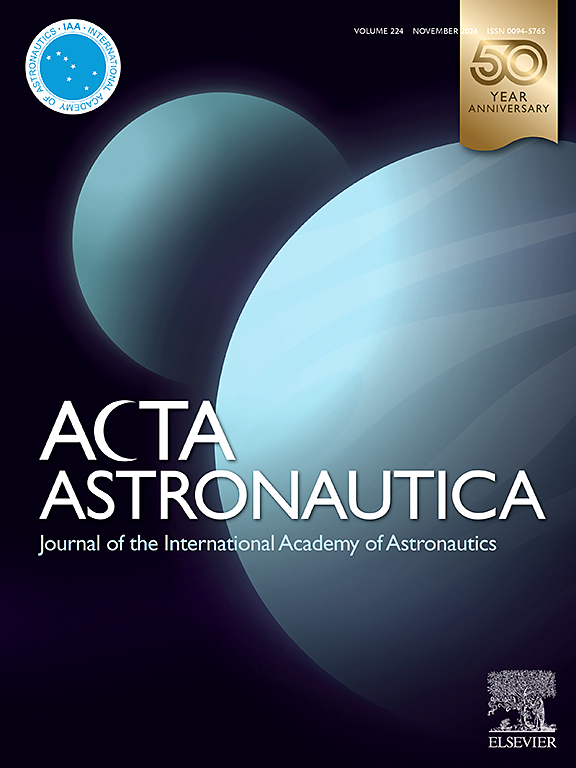A comprehensive assessment of rocket body related space debris and discussion of suitable means of risk reduction
IF 3.1
2区 物理与天体物理
Q1 ENGINEERING, AEROSPACE
引用次数: 0
Abstract
Rocket bodies account for about 50 % of the total debris mass currently orbiting the Earth. They contribute significantly to the consistent growth in space debris due to their high collision and fragmentation risk and represent a high on-ground risk in the event of an uncontrolled re-entry. As a compensatory measure, orbital rocket stages are to descend over the ocean by means of an active deorbit manoeuvre so that unburned parts no longer pose an acute danger. However, mitigating the negative environmental impacts of destructive atmospheric re-entry is becoming more of a priority due to the increasing space activities and growing knowledge about re-entry emissions. Hence, a non-destructive, controlled re-entry might be a possible alternative for large objects, which requires a “Design not to Demise” (Dnot2D). To evaluate the applicability of Dnot2D to rocket bodies, it is necessary to obtain a comprehensive understanding of their physical characteristics, the distribution of different vehicle types, and the quantities of relevant objects involved. Within this study, an in-depth evaluation of documented rocket body related space debris objects with a focus on their orbit, mitigation timelines, mass, and geometry, utilizing publicly available databases, is presented. Special attention is given to active systems as potential targets for mitigation measures with regard to environmental impact. Additionally, a parametric trajectory analysis is conducted to quantify the influence of key parameters relevant for Dnot2D, employing empirical methods. Finally, concrete measures for implementing a Dnot2D are discussed based on the results.
求助全文
约1分钟内获得全文
求助全文
来源期刊

Acta Astronautica
工程技术-工程:宇航
CiteScore
7.20
自引率
22.90%
发文量
599
审稿时长
53 days
期刊介绍:
Acta Astronautica is sponsored by the International Academy of Astronautics. Content is based on original contributions in all fields of basic, engineering, life and social space sciences and of space technology related to:
The peaceful scientific exploration of space,
Its exploitation for human welfare and progress,
Conception, design, development and operation of space-borne and Earth-based systems,
In addition to regular issues, the journal publishes selected proceedings of the annual International Astronautical Congress (IAC), transactions of the IAA and special issues on topics of current interest, such as microgravity, space station technology, geostationary orbits, and space economics. Other subject areas include satellite technology, space transportation and communications, space energy, power and propulsion, astrodynamics, extraterrestrial intelligence and Earth observations.
 求助内容:
求助内容: 应助结果提醒方式:
应助结果提醒方式:


